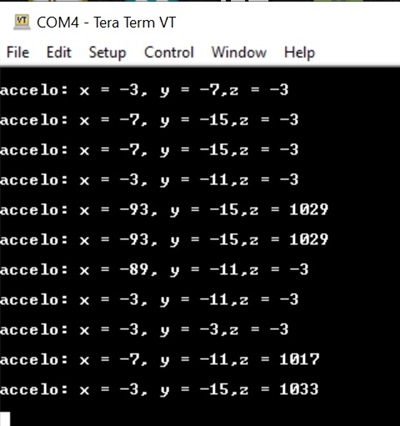Other Parts Discussed in Thread: CC2640R2F, CC1350
Tool/software: Code Composer Studio
Hi,
We interface I2C LSM303AGR Accelerometer + Magnetometer Sensor to CC2640R2F. We used Sensor Controller I2C to communicate with it and it works 100%. When the LSM303AGR is flat on the ground the accelerometer reading is around X = 0 mg, Y = 0 mg, Z = 1000 mg. 20/20 samples from Sensor Controller is good.
We decide to use RTOS to communicate with I2C LSM303AGR. So I port the Sensor Controller code to RTOS and the output is not consistent, see below. The accelerometer Z should be always be around 1000 mg. I would like to know if there is any issue with RTOS I2C at SDK 2.40. I have read in this forum that there is a problem with I2C at CC1350 SDK but I am not sure if that affects also CC2640R2f RTOS I2C.
-kel



